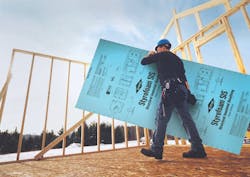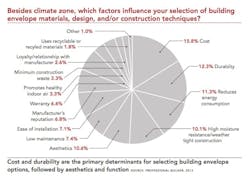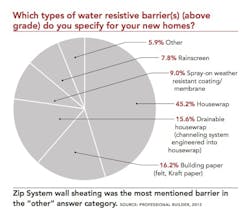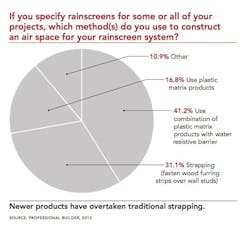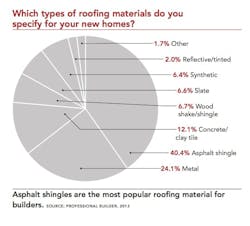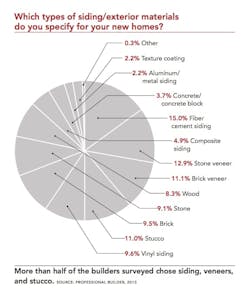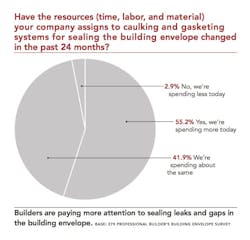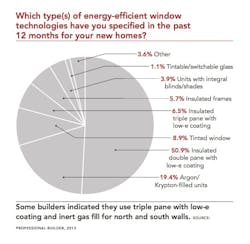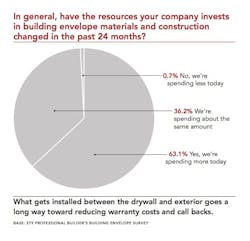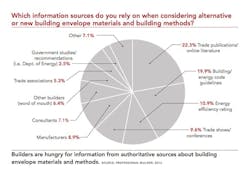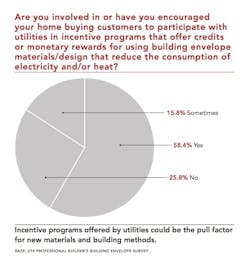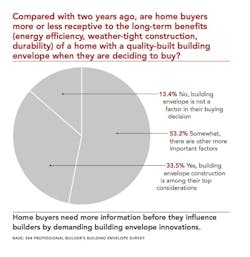The building envelope has evolved from being the shell of a structure to a growing field of construction science fed by a burgeoning industry of manufacturers, design professionals, academics, researchers, code bodies, and contractors.
The roster of options for preventing air and moisture infiltration has ballooned from mere rolls of building paper to technologies, products, and building methods that have upgraded the discussion about foundations, walls, and roofs with words like systems, load deflection, and component integration. Inevitably there is a clash between the traditional construction materials and methods with which builders are already familiar and new products and techniques for which vendors are trying to win acceptance.
Methodology and Respondent Information
This survey was distributed in June 2013 to a random sample of Professional Builder’s print and digital readers. No incentive was offered. By closing date, a total of 290 eligible readers responded. Respondent breakdown by discipline: 34 percent custom home builder; 24 percent diversified builder/remodeler; 15 percent production builder; 10 percent architect engaged in home building; 3.4 percent multifamily builders; 3 percent manufactured, modular, log home, or systems builder, and 9 percent other. All regions were represented with 18 percent hailing from East North Central (Illinois, Indiana, Michigan, Ohio, and Wisconsin), followed by the South Atlantic (16.5 percent), Pacific (12 percent), and Middle Atlantic and Mountain regions each with more than 11 percent. Fifty-nine percent of respondents had built one-to-five homes during 2012.
The number of building envelope products increased 40 percent since 1990, according to “The Building Envelope Technology Roadmap,” a report compiled by building envelope industry representatives in conjunction with the Department of Energy. But the report adds that deploying building envelope innovations has been hindered by the complexity of the housing industry, which is fragmented by thousands of companies of all different shapes and sizes, making collaboration and communication difficult.
Consequently, construction researchers are not informed about industry structure and market needs. Manufacturers, architects, builders, contractors, and code officials don’t have a widely accepted rating system for evaluating new products and systems, and consumers don’t have enough information to generate demand for innovative building envelope products just yet, according to the Roadmap report.
While not a majority, one-third of the 290 home builders who participated in Professional Builder’s Building Envelope survey indicated that along with cost, location, and floor plan, building envelope design was a top consideration for their buyers. Although the knock against builders is that they tend to resist change, they are hungry for new information and rely on such sources as trade publications and online literature, code guidelines, energy-efficiency ratings, trade shows, and conferences.
Sign-up for Pro Builder Newsletters
Get all of the latest news and updates.
